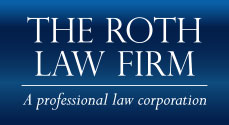The Roth Report: Jurists who write lengthy treatises
James M. Roth, Esq., The Roth Law Firm
How many of you read all 53 pages of the Montrose decision? I did, though I had to painstakingly read it a few times to understand the subtleties.
We seem to be blessed by jurists who want to ensure precision in their written opinions and seemingly do so by writing lengthy, and oftentimes boring, treatises. As a practitioner of insurance law, I need to read the decisions handed down to remain current with the ever-changing state of insurance law.
Since I read all of the cases, I can make your life just a little easier by using this periodical as a forum to share with you an abstract of the appellate and Supreme Court decisions which affect the insurance industry. With this inaugural column, we’ll look at a decision discussing the disqualification of an attorney in a “bad faith” lawsuit.
Recently, an attorney and his law firm were disqualified from representing an insured of Fireman’s Fund Insurance Company (FFIC) in a lawsuit against FFIC alleging “bad faith” and breach of insurance contract because the attorney had previously represented FFIC. While you may conclude that a previous relationship with the defendant insurance company would automatically result in disqualification, a “substantial relationship” must exist between the subject of the former representation of the defendant and the subject of the current plaintiff’s litigation.
In granting the motion to disqualify, the Court of Appeal in the case styled Farris V. Fireman’s Fund Insurance Company, 14 Cal.Rptr.3d 618, 2004 WL 1366798 (Cal.App. 5 Dist.), found the required “substantial relationship” because during the 13 year relationship with FFIC and while a member of a different law firm, the attorney (and his previous firm) provided coverage and claims handling advice to senior employees and decision makers at FFIC, including settlement, litigation and claims handling strategies in connection with coverage matters, and participated in confidential communications with top-level FFIC employees.
The attorney, while with his previous firm, had also been a presenter in educational seminars given to FFIC employees on issues related to coverage disputes and bad faith actions. The Court concluded that given the factual and legal issues in the present case, the information material to the evaluation, prosecution, settlement, or accomplishment through the attorney’s earlier representation of FFIC was also material to the evaluation, prosecution, settlement, or accomplishment of the current representation. The lesson here is that if you’re sued by a former attorney/law firm, you should be able to disqualify them if they provided to or received from your company confidential information which could be used against your company in the threatened suit. Interestingly, other cases involving conflicts like this have allowed the current law firm to erect a wall so that the conflicted attorney was quarantined from the file.
Now the legal disclaimer: This column is provided as a reference for the benefit of members of the insurance industry. The opinions and comments contained herein are intended to inform and educate. Legal counsel should be consulted before applying my reasoning to your question.
James M. Roth is a shareholder in The Roth Law Firm. Mr. Roth’s practice includes representing TPAs and insurance carriers in coverage, SIU, extra-contractual liability, and third party defense matters.

